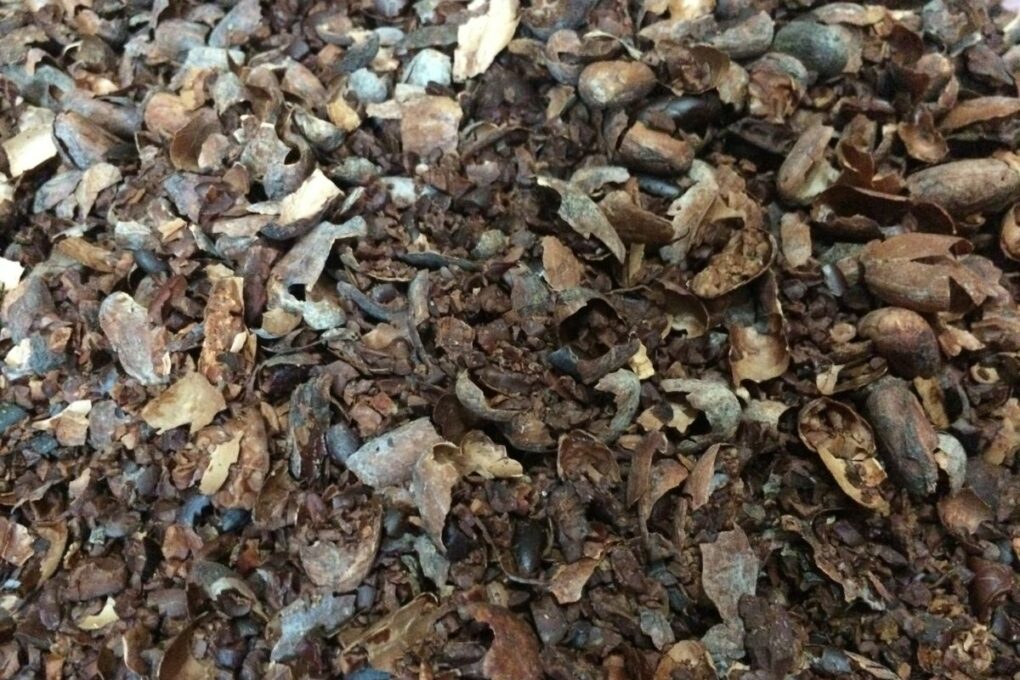A December 2022 report and a follow-up October 2023 report from an independent nonprofit citing toxic levels of heavy metals in dark chocolate led a man to file a class-action lawsuit against The Hershey Company shortly after its release.
Buzz generated by multiple news outlets added to the already rising attention to heavy metal contamination in chocolate. But is there merit to the frenzy?
Among the metals tested is cadmium (Cd), a soft malleable metal that’s usually found in zinc byproducts. It’s best known as an important metal in the production of the popular nickel-cadmium (Ni-Cad) rechargeable battery.
At first glance, the results of the study and its follow-up appear alarming, as heavy metals can be toxic to humans. Although the risks have merit, it's a little unfair to raise alarms while leaving out important context— whose standards for cadmium levels in chocolate are being followed?
For example, eating too many bananas can expose you to more radiation than is deemed safe by the FDA. Cadmium exposure is very common, and different agencies have their own thresholds of exposure.
In this article we explore the truth about the levels of cadmium in chocolate, and what you need to know as a consumer to stay safe.

Jump to:
Sources of Cadmium in Chocolate
Cadmium was first discovered in Germany in 1817, by Karl Hermann. It’s found in zinc ores and greenockite, so any work environment that involves pigments, welding, plating, soldering, and battery manufacturing exposes workers to cadmium.
It’s also present in the air due to the smoke from cigarettes and fumes from automobiles. Phosphate rocks containing cadmium are used to make farm fertilizers, and contribute most of humans’ exposure to the metal.
To a lesser extent, cadmium is also found as an impurity in pesticides used two decades ago. Other natural factors contributing to cadmium exposure are volcanic activity, forest fires, and the weathering of rocks. Cadmium in the soil can also make its way into water.
The European Commission has been aware of cadmium’s presence in chocolate for many years, and even established regulations that were fully implemented in 2019. According to Consumer Reports’ publication, cacao solids are the primary ingredient containing cadmium.
Cadmium is taken in from the soil by the cacao tree’s roots, which distribute the metal throughout its body and into the fruit pods. As the cacao tree ages, the plant accumulates more cadmium, and therefore over time produces cacaos with increasing levels of cadmium content.
This process is similar to how other plants become contaminated with heavy metals. As a result, the exposure of cacao to cadmium is highly dependent upon the presence of cadmium in the soil where the cacao was grown and the age of the trees being harvested.
In chocolate production, added ingredients like sunflower lecithin and milk can also contribute to cadmium levels in chocolate, albeit to a much lesser degree. A study in 2020 of heavy metal levels transferred to the milk of 20 cows near a metallurgical complex in Peru found that the milk they produced had higher levels of cadmium.

Health Effects of Cadmium
What may be considered normal cadmium exposure varies around the world. In 1972, the World Health Organization (WHO) evaluated regional daily intake of cadmium to determine what would be considered normal and critical exposure.
The results ranged from 4 μg/day to 113 μg/day. Surprisingly, four non-polluted areas in Japan returned a range between 59 – 113, the highest among the US, Western Germany, Romania, and Czechoslovakia.
Despite the US scoring as low as 4 μg/day, people in some parts of the country had an intake of 50-60 μg/day. In this report they proposed that the daily intake of cadmium should not exceed about 1 μg/kg body weight per day.
So if you weigh 128 pounds (58kg), they proposed that your daily cadmium intake should not exceed 58 μg per day. However the United States does not have a federal standard on the oral intake of cadmium like they do for cadmium exposure in water & the work environment.
So in 2001, the state of California established Proposition 65 through the state’s Office of Environmental Health Hazard Assessment (OEHHA). The group defined a maximum allowable daily limit (MADL) of 4.1 μg per day, based on a pregnant woman weighing 128 pounds (58 kg).
They arrived on that number because it would fall below the No Observable Effect Levels of cadmium (NOEL), which is 0.07 μg/kg per day. It's important to note that Consumer Reports’ article and the study conducted by the California-based As You Sow organization are what are being used as a basis to sue the big chocolate companies.
The CR study in turn resulted in a man filing a suit in New York against the Hershey Company, basing their parameters around Proposition 65 standards and their considerably lower threshold.

For context & reference, in 2009, the European Food and Safety Authority published news that it was reducing its tolerable weekly intake for cadmium in food to 2.5 μg/kg body weight per week. With the same body weight value of 58kg used as the basis for the Californian standard, that’s 20.7 μg per day (500% of the maximum allowed by Prop 65).
Furthermore, the Agency for Toxic Substances and Diseases Registry (ATSDR), also based in the United States, set the minimal risk level (MRL) for oral intake of cadmium to 0.1 μg/kg body weight per day. That's 5.8 μg per day (141% of the Prop 65 maximum).
In the examples of chocolates tested in CR’s study, the range of cadmium content was between 25% to 253% of California’s Prop 65 MADL. Although some of these numbers may seem high, there’s more than one standard that governs the safety levels of cadmium in food.
This is not to discount CR’s and As You Sow’s efforts, as excessive exposure to and intake of cadmium poses real health risks. Cadmium accumulates in the bones and kidneys, and only a small amount of your intake is naturally excreted.
It’s also considered to be a carcinogen and a particular health risk during early childhood. Acute high-dose cadmium exposure can lead to food poisoning when ingested, and bronchitis, chemical pneumonitis, and/or pulmonary edema when inhaled.
Cadmium accumulates in the bones; however, the kidneys are primarily affected by chronic cadmium exposure. But no bar of chocolate will expose you to anywhere close to such levels, even if you ate one Hershey bar a day (which I don’t recommend, regardless!).

How to Reduce Cadmium Exposure from Chocolate
In a 2021 news article released by the Food and Agriculture Organization of the United Nations (FAO), they proposed new maximum levels (ML) for cadmium in chocolate. Chocolate containing up to 30% cocoa total solids should contain no more than 0.3 μg/kg, with a 0.7 μg/kg maximum for chocolate between 30 - 50% cocoa solids.
A slide presentation continues these parameters, recommending that cocoa solids between 50 and 70% have a ML of 0.8 μg/kg, and 0.9 μg/kg for anything higher than 70%. These were all based on a dry matter & cocoa solids’ basis.
Controlling Cadmium Exposure from Chocolate
One proposed solution to address the cadmium levels in cacao solids is to lower the average cadmium level per batch by mixing beans with higher and lower levels. Another is to cut down older trees, which are more likely to produce cacao with high cadmium levels.
It’s also been proposed that manufacturers survey the soil of the cacao farms they buy from. The issue with this approach is revealed by an article in 2020 that points out that many of the producers of cacao are mid-scale, low-income farmers.
Unfortunately, the soil of cacao farms in most of South America already have naturally high levels of cadmium. They did find that adjusting the soil pH by mixing lime into it prevented the cadmium from dissolving and being absorbed by plants.
However, distributing lime into subsoil with enough depth, and without disturbing the roots of the cacao plant, is still a challenge with no easy solution.
Chocolate Brands High in Cadmium
As You Sow provided a list of the chocolates they tested and their heavy metal content. They noted the cadmium level per serving in μg/serving. The difficulty is determining what is considered “high,” as it will depend on the levels proposed by the agency regulator that is chosen for reference.
Generally, of those listed containing 0-50% cacao, all had very low levels of cadmium, even by Prop 65 standards (between 0.2-3.8 μg/serving). It’s beyond 50% cacao that the results are more varied.
There are even chocolate products in the 95-100% cacao category that had cadmium levels as low as 0.6 μg/serving. Some examples of chocolates on the list that stood out include:
- Theo Organic Fair Trade Pure 65% Dark Chocolate Goddess of the Harvest at 29.0 μg/serving
- Trader Joe’s ‘The Dark Chocolate Lovers Chocolate Bar’ 85% Cacao Tumaco at 26.0 μg/serving
- Newman’s Own Organics ‘The Second Generation Super Dark Organic Chocolate 70% Cocoa at 40.2 μg/serving
- TCHO Extra Dark 81% Cacao at 24.5 μg/serving
- Pascha Organic Dark Chocolate 85% Cacao at 23.0 μg/serving
- *Sam’s Choice ‘Swiss Dark Chocolate’ 90% Cocoa at just 3.0 μg/serving*
Hershey’s Milk chocolates scored a range of 0.6 – 2.5 μg/serving for milk chocolates, up to 3.8 μg/serving for dark mildly sweet chocolates, and up to 15.1 μg/serving for the Scharffen Berger Extra Dark Artisan Chocolate line.

Chocolate Cadmium Levels FAQ
Cadmium accumulates in soil through natural means and the use of certain fertilizers. Plants, including the cacao tree, absorb it through the roots, accumulating in the plant, its fruits, and seeds. Cadmium has a relatively long half-life, so the older the tree, the higher its accumulation in its fruits and seeds.
Milk and white chocolate contain the least cadmium. Cacao solids are where cadmium is present, and they make up a lower composition of both milk and white chocolate (if any).
Dark chocolate between 50% to 100% cacao contains the most cadmium. Cadmium is generally found in the cacao solids, which make up a higher percentage of these chocolates. However, a higher cacao percentage doesn’t necessarily mean a higher cadmium level. The origin of the bean, the environment they grew in, and how they are processed have a large influence on the cadmium levels in the final chocolate bar.
Most likely. Cadmium proliferation in the environment is extensive, as it accumulates in soil through natural means and fertilizer usage. Since cadmium accumulates in the cacao bean, an integral ingredient in all chocolate, it’s nearly impossible to eliminate it entirely.

















Comments
No Comments